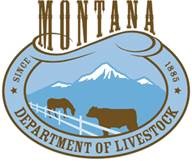 This week the Board of Livestock met in Helena for their May meeting. One of the major items on the agenda was to review proposals from Fish, Wildlife and Parks (FWP) and the Department of Livestock (DOL) on an Environmental Assessment that would allow more tolerance of Yellowstone bison on its western boundary.
This week the Board of Livestock met in Helena for their May meeting. One of the major items on the agenda was to review proposals from Fish, Wildlife and Parks (FWP) and the Department of Livestock (DOL) on an Environmental Assessment that would allow more tolerance of Yellowstone bison on its western boundary.
Click here to listen to this podcast on SoundCloud.
Since the beginning of the Bison Environmental Assessment, MSGA has submitted extensive written comments supporting a no action alternative. The Board of Livestock (BOL), during its three previous meetings in January, March and now May, have also discussed this Environmental Assessment in great detail. In particular, there was an addendum to the EA, which allowed for a population objective that would trigger whether or not Yellowstone bison could come into the state of Montana.
We were very pleased today that the BOL voted unanimously to table indefinitely the subject of the bison EA. While MSGA was very grateful that the DOL, FWP and the Governor’s office were very transparent and allowed us to have adequate input into this proposal and hear our suggestions quite seriously, we still are not able to support the proposal as it was written.
MSGA has continued a close working relationship with the DOL on issues that are important to ranchers across the state of Montana. Moving forward we will be working with the state agencies on a future IBMP plan and encourage ranchers across the state to work with MSGA to provide their input.
Brucellosis in the state of Montana is not going to go away anytime soon. The big call to action for the ranching community and the members of MSGA is to think critically about how to manage the complexity of this issue of brucellosis as it persists in Yellowstone bison, migratory elk, and how it affects our ability to raise commercial cattle in southwestern Montana.
In the next several months and years to come, the state of Montana is going to be engaging in a full-fledged Environmental Impact Statement (EIS) to rewrite the Interagency Bison Management Plan (IBMP) from its current version, which was adopted in 2000. Under this process, Governor Bullock and the administration will be taking the lead on what the inputs to this plan will look like from the state of Montana’s perspective. MSGA certainly looks forward to engaging proactively in the process and getting input from our stakeholders at all levels so that we can provide credible information into how to best develop a management plan or bison as relates to the state of Montana.
One of the most immediate and best ways to engage in this conversation is to attend MSGA committee meetings, in particular our Cattle Health subcommittee, which will be meeting in Miles City on June 14. Our team will be having a very comprehensive discussion about brucellosis in bison and elk, as well as our own designated surveillance area for the state of Montana. Ranchers may also send or e-mail your comments to MSGA office and let us know your thoughts on how we can best develop a more comprehensive management plan for the state of Montana at all levels of the brucellosis debate.
For more information on attending our June policy meetings, you can go to the website, mtbeef.org, and find details on our Mid Year meeting in Miles City. We can also be reached by phone at (406) 442-3420.
 Public comment on expanding the state’s Designated Surveillance Area (DSA) for brucellosis to include a 365-square mile chunk of land between Norris and Three Forks (see map) opened late last week.
Public comment on expanding the state’s Designated Surveillance Area (DSA) for brucellosis to include a 365-square mile chunk of land between Norris and Three Forks (see map) opened late last week.



